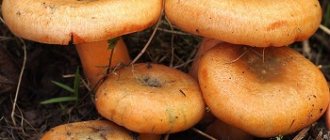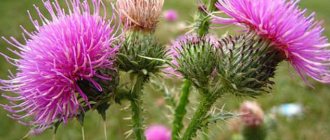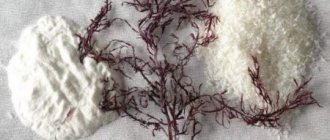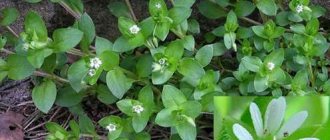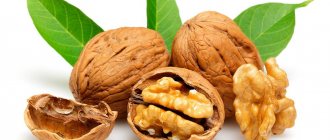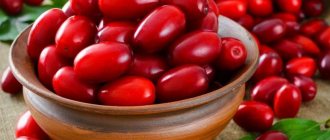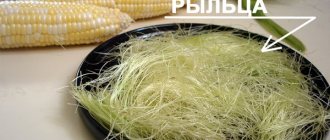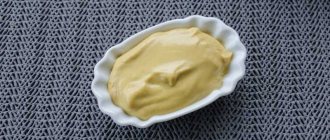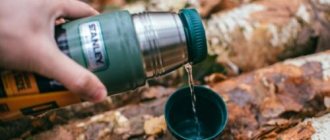Timothy is a herbaceous plant from the grass family and includes more than 30 species in the genus, the most important of which is meadow timothy. In the wild, the grass is distributed in all geographical areas of Europe, America, Africa and Australia. The plant grows everywhere in Kazakhstan and Crimea, on the territory of Western and
Eastern Siberia. It is not demanding on soils and can grow on poor, moderately acidic, sandy or clayey soils, so its favorite places to grow are forest glades, steppes and even mountainous areas.
The grass has several names, the most common of which are: arzhanets, stick insects, field grass, oatmeal, seedlings, spikelets and sivuns.
Description and chemical composition of timothy grass
Arzhanets is a herbaceous perennial with a well-developed, powerful fibrous root system capable of penetrating into the soil to a depth of more than a meter. The stems of the plant are cylindrical, hollow inside, straight or curved at the lower internodes, and grow up to 1 meter in height. A distinctive feature of the stick insect is a bulb-shaped thickening located at the base of the shoot.
The leaves of the stick insect are narrow, flat and long, with edges hanging down. Their width varies between 0.5-0.9 cm, and their length can reach 40 cm. They are rough to the touch. Arzhanets bloom in late spring - early summer with small flowers collected in a cylindrical inflorescence - a sultan, the length of which is 5-12 cm. Due to the spikelets fused with the main axis, the sultan is quite rigid.
Flowering begins at the top of the inflorescence and lasts for 4-7 days. Fruit ripening occurs 3 months after the shoots grow. They are numerous small grains of gray or brown color, having a round-oval shape. Having fallen off, the seeds germinate quite quickly and form a lush green turf that is resistant to trampling and freezing.
What timothy grass looks like is shown in the photo:
The perennial grass timothy contains unique components:
- coumarins;
- flein;
- tannins;
- organic acids: chelidonic, p-coumaric and others;
- flavonoids;
- vitamins: ascorbic acid (C), carotene (A), thiamine (B1) and riboflavin (B2).
Cereal plant timothy grass – General information – 2020
Among the most common cereal crops growing in Russia, everyone knows from childhood the bushy grass, popularly called “arzhanets”, “seedling”, “sivukha” or “stick insect”. This is nothing more than a grass of the bluegrass family - meadow timothy.
Description of the plant
The stem of timothy grows in height from 25 centimeters to one and a half meters. It is cylindrical, hollow, erect, with rough to the touch, elongated, pointed at the ends leaf blades of green or gray-green color. The root system is creeping, with short rhizomes.
Timothy grass, photographs of which are presented in the article, has an inflorescence in the shape of a complex spike (sultan), which is very similar to the inflorescence of foxtail, but more rigid. It lacks bristles, and the anthers, unlike the yellow anthers of the foxtail, are purple.
Meadow timothy is cross-pollinated using the wind. At the base of the shoot, the plant has another distinctive feature - a thickening in the form of a bulb. Timothy meadow blooms in early summer.
The seeds, having fallen off, quickly germinate again, forming a lush carpet underfoot that is resistant to trampling and retains its green color throughout the summer and even after the onset of winter cold.
origin of name
Timothy grass has become widespread throughout the non-chernozem territory of Russia. Its use as a cultivated plant sown in burnt areas is mentioned in documents from the Vologda province dated from the late 17th to early 18th centuries.
The peasants noted the unique features of this cereal plant, which does not require special care, the easy harvesting of seeds stored in the inflorescence for a long time, the love of timothy for cattle, which willingly eats not only fresh grass, but also hay stored for the winter.
It is thanks to its agricultural properties that this cereal became widespread in other territories, and was also exported to another continent. According to one version, the enterprising American farmer Timofey Hanson took the seeds of this plant to America, where it also became widespread as a fodder crop.
By promoting its distribution, he achieved commercial success and began to officially import seeds into Europe. Thus, it returned to the territory of its original growth, but under a new name - Timothy grass, or timothy grass, perpetuating the name of the American.
Planting and care
Timothy grass is a hay plant. It is durable and can grow in one place for up to 10 years. Seeds germinate already at a temperature of 1-2 degrees Celsius, and at +5 the first germinated seedlings appear.
Timothy grass does not tolerate drought - it is a moisture-loving plant that can even survive flooding. Considering that this grass does not withstand shading well, it is better to plant it with plants whose active growth period is shorter.
Thus, timothy gets along well with legumes and clover.
Harvest quality
The full name of the plant is meadow timothy. This is a perennial loose-bush cereal plant with a small rhizome.
Most often, meadow timothy is found in Europe and Asia Minor, but this does not mean it is not grown in other extratropical regions.
In the CIS, timothy grass is found in any area except desert and arctic ones. For example, in the Far East you can find an introduced plant.
Description of the species timothy grass
Characteristic features of the plant:
- The length of the stem can be from 20 to 80 cm, the stem is thin from 1 to 3 mm, and is stronger at the base.
- The leaves are narrow, from 3 to 10 mm, but long, up to 15 cm, flat, color zero-green, mostly smooth, rough at the edges, no ears. There are also stem leaves; they can be protruding, but more often they are horizontally spread and drooping.
- Timothy grass sheaths are not closed, pointed, the structure is rough, the small tongue can be both sharp and blunt.
- The inflorescence of timothy is a plume, a dense panicle, can be shaped like a cylinder or a cone, the apex is rounded, the length of the inflorescence is from 2 to 10 cm. Along the entire length of the inflorescence, the branches are adjacent to the main axis and if you bend it, the blades will not stand out. This is called sessile spikelets.
- The spikelets are light green in color, the scales on them do not exceed 4 mm in length, each is located separately, the edge is ciliated.
- The scales on the flowers are much smaller than the spikelets, about 3 times, each of them is jagged at the end and has longitudinal veins.
As for pistils and stamens, timothy has 3 stamens, the anthers are purple. The grain is about 2 mm long; if you collect 1000 seeds, their total weight will be only 0.4 grams.
Features of the development and flowering of cereals
The most favorable conditions for the development of timothy grass:
- Near roads
- In rare forests
- Fields
- Dry meadows
- water meadows
The grass grows quietly along with other plants without causing any negative effects.
Meadow timothy loves moisture, in this feature it resembles perennial ryegrass; both of these plants do not do well with excessive rainfall or close proximity to groundwater. They also do not tolerate drought well, especially the dry period, which is difficult during germination, during rooting and development of secondary roots.
Timothy grass is frost-resistant, easily tolerates winter, even after a severe winter, when the snow melts, the plant remains green as before.
The growing season usually occurs at the end of April, and further heading depends on the growing/growing conditions and variety, usually from one to two months, full flowering begins from the 50th to 80th day.
If we compare timothy with other cereals, it is considered late; only white bent is ahead of it in this criterion.
Timothy grass is a spring-winter and spring type cereal. If favorable conditions are provided: favorable temperature conditions and the amount of moisture, then already in the same year it can bloom and become dry. Flowering begins in late June-early July, that is, approximately on the 70th day from spring regrowth.
Flowering begins in the morning, as long as there is high humidity and warm weather.
Under favorable conditions, the sultan blooms completely in 5 days; if the weather is cloudy, then this period will last another 5 days. First, the upper part of the inflorescence opens, then gradually the lower part.
Seeds appear after about 30 days; the seeds are small, oval-shaped, up to 2 mm long.
Timothy grass: description
Arzhanets has a rather tall stem, which grows from 25 cm to 1.5 m in height. It is erect, hollow, and cylindrical in shape. The leaves are rough to the touch, elongated with pointed ends, and colored green or gray-green. The root system is creeping, the rhizomes themselves are relatively short.
The inflorescence of meadow timothy is in the form of a complex spike; it is popularly called “sultan”. It is almost the same as the foxtail inflorescence, only much tougher. The anthers are purple in color and have no setae. Pollination of stick insects is easy and occurs with the help of the wind.
A distinctive feature of Arzhan is the bulb-shaped thickening at the base of the shoot. The grass blooms in June and begins immediately with the onset of summer.
Where to grow?
Timothy grass is considered an ideal neighbor for other plants: it grows quietly and develops well, without having a negative effect, together with other plants. It is successfully used to create hayfields in hard-to-reach and problematic areas, such as lowland meadows, mountainous areas, and swamps after drainage.
Places for growing Arzhan:
• water meadows, • dry meadows, • sparse forests, • fields,
• near roads.
Having decided on a place where you can sow the land with arzhan, you can begin planting. Timothy grass will feel comfortable on the following soils:
• loamy, • clayey, • cultivated peat bogs, • fertile, moderately moist,
• alluvial.
Seeds sown in the soil germinate at 1-2 degrees of heat; with an increase in temperature to 5 degrees, the first germinated seedlings appear. Stick insects can grow in one place for a very long time. For more than ten years, this excellent hay plant will provide the owners of the same plot of land with rich hay cuttings.
Seeds that fall off after ripening germinate again very quickly. Thanks to this quality, meadow timothy constantly spreads underfoot in a lush green carpet, which retains its bright color all summer until the first winter frosts. In addition to all the useful qualities, the plant is also resistant to trampling.
Stick insects are considered a simple and unpretentious grass, but this plant also has its own characteristics and preferences, like all living things on Earth. Timothy grass does not require much; it has only two main conditions for caring for it:
1. Life-giving moisture: Arzhan does not tolerate drought at all; dry soil for a long time means death for this meadow grass. This moisture-loving plant can tolerate flooding of its territories with water, but may well die from a long drought.
2. Life-giving sun rays: shading for timothy is undesirable - it will grow and develop much worse if you plant plants that can quickly overtake it in growth. The best neighbors in the meadows for the Arzhan are legumes and clover.
From the above we can conclude that water is very important in caring for timothy grass. As for the sun, without it the grass cannot grow either, but at the same time it can kill the plant through prolonged drought.
Timothy grass: description of the harvest
Compared to other cereals, arzhan is considered a late plant. In this regard, only white bentgrass managed to overtake it. Timothy grass is a winter cereal of the spring type.
If meadow grass receives all the conditions favorable for its development and growth, then already in the first year after planting it can bloom and become emaciated. Timothy begins to produce its first flowers on the seventieth day of spring growth. This period falls on June-July. The plant begins to bloom in the early morning, as long as there is high moisture in warm weather.
Timothy blooms completely in 5 days (this is subject to favorable weather). If these days the sun is always hiding behind the clouds, and the weather is cloudy, then the flowering period is extended by another 5 days. First, the top of the inflorescence blooms, then the lower part opens. After about a month, small, oval-shaped seeds appear. Their length is about 2 mm.
Timothy grass has excellent feeding qualities and at the same time produces a good harvest. In one season, there are two cuttings, in the worst case – one cutting and a waste. From one hectare you can collect about 6 quintals of seeds and up to 80 quintals of hay.
Hay contains a lot of carotene and vitamin C. One centner of the crop contains 4.1 kg of protein; if we consider the value of grass, then it contains 1.7 kg of protein.
Undoubtedly, meadow timothy deserves the attention of farmers and is an excellent food for animals.
Botanical description
Timothy grass, the description of which is known to many, belongs to the Poaceae family. It can be found in Europe and Asia Minor, as well as in Africa and Australia.
This plant is also often found in the CIS. Timothy grass grows in any area except the arctic and desert. The stem of this grass can grow from 25 cm to 1.5 m.
It is cylindrical in shape, erect and hollow. The leaves are elongated, rough, have pointed ends, and can be green or gray-green. The creeping root system has short rhizomes.
The flowers are collected in inflorescences that have the shape of a complex spike. The inflorescence is popularly called “sultan”; it is about 10 cm long. The spikelets are fused with the main axis, so they are quite rigid.
The plant begins to bloom in early summer, first blooming flowers in the upper part of the inflorescence. Each spikelet blooms from 4 to 7 days.
At the base of the shoot there is a thickening similar to an onion. Pollination in timothy occurs with the help of wind.
This meadow crop has high winter hardiness and frost resistance. But it does not tolerate prolonged waterlogging and severe drought.
Purpose of timothy grass
Timothy grass is used for ordinary lawns, as it does not tolerate cutting very well. It is used as a component of lawn mixtures to decorate parks and revitalize trails.
The main purpose of grass is as a fodder crop. Timothy is used as a green supplement and is also harvested for hay and silage. It contains about 14% protein.
The harvest of green grass can be harvested up to 200 c/ha. Dry hay yields from 20 to 120 c/ha. If timothy is grown together with red clover, the forage quality of the plant increases.
Features of cultivation and sowing rates
Timothy grass is a plant that is not very demanding on the soil, but sandy and swampy soils are not suitable for growing. This culture prefers neutral and alkaline soils. Weak soils are fertilized before planting with manure (30 tons per 1 ha). You can also apply nitrogen fertilizers.
When planting stick insects in the spring, in the fall it is necessary to harrow the soil to a depth of 25 cm. Plant the grass in April. The seeds germinate within a week.
Planting timothy in the fall is most effective, especially when combined with other crops such as clover or alfalfa. In its pure form, the sowing rate is 11 kg per 1 hectare of area, and in the form of mixtures of herbs - 6 kg per 1 hectare.
In the prepared area, small grooves are made, about 2 cm deep, and the seeds are sown. In field agricultural conditions, planting is carried out in a continuous manner according to the standard scheme for sowing cereals.
To obtain seeds, it is best to plant with row spacing of at least 0.5 m.
Advantages and disadvantages of culture
The benefits of culture include:
- high winter hardiness,
- ability to grow on poor lands,
- high productivity,
- good feeding qualities,
- long life expectancy.
Disadvantages of the plant:
- long growing season,
- not very resistant to grazing, its yield decreases faster when used for pasture than when used for haying,
- does not tolerate drought well,
- not suitable for creating lawns with short grass, as it does not tolerate cutting well.
Watch the video: The fastest lawn. The lawn is fast growing. How fast does lawn grass grow (January 2020)
Source: https://ru.blabto.com/5596-timothy-meadow-description-of-the-species-and-charac.html
Useful properties of timothy grass
Thanks to the organic and chemical substances it contains, stick insects have the following beneficial properties:
- The flavonoids included in the composition prevent capillary fragility and have a beneficial effect on the functioning of the heart and blood vessels.
- Tannins contained in stick insects help normalize the functioning of the digestive system, stimulate the functions of the nervous system, which has a positive effect on the functioning of the entire body and ability to work.
- A large amount of ascorbic acid in the composition fights the causative agents of colds and viral diseases.
- Coumarins included in the composition give the plant antimicrobial properties.
Arzhanets has the following properties:
- immunomodulatory;
- antifever;
- painkillers;
- cleansing;
- antimicrobial;
- diuretic.
Features of Timothy grass: application, sowing and care
We recommend using lawn grass mixtures with timothy mainly for construction purposes : for grassing slopes, for creating lawns in parks and for landscaping large urban areas after renovation work. This is due to the fact that timothy grows in tussocks and is not suitable for highly decorative lawns .
Timothy grass is an inexpensive herb , so lawn grass mixtures containing it will pleasantly surprise you at the price.
Sowing and caring for a Timofeevka lawn is quite simple. Replacement grass for the lawn should be planted in previously loosened and prepared soil to a depth of several millimeters.
Please note that along the edge of the lawn, near paths and flower beds, more seeds will be needed than in the rest of the area. Typically, 40-60 grams of seeds per square meter of soil is required. It is recommended to plant a lawn before November so that the grass has time to sprout before the onset of cold weather, or to sow it in the winter.
Under favorable conditions, the Timofeevka lawn will delight you with the first shoots within a few days after planting. The first weeks the lawn must be watered daily. You cannot walk on the grass at this time.
In our assortment, meadow timothy is presented in the following lawn grass mixtures:
— Lawn road,
— Reclamation lawn,
— City Lawn,
— Lawn Landscape,
— Lawn Roadside,
— Lawn for tinning slopes.
Use of medicinal herbs in medicine
Timothy stems and roots have long been used in folk medicine: both as an independent remedy and as part of preparations.
- To relieve toothache, use arzhan root: just apply it to the sore spot.
- To clean your teeth, use a grass stem; chew it well enough. When chewed, the stem turns into soft, medium-sized fibers that cleanse the teeth, and the juice released from the plant has an alkaline reaction. To make such a remedy also therapeutic (and not just cleansing), it is enough to add a leaf of mint, thyme, St. John's wort or yarrow.
- Arthritis, arthrosis, radiculitis and rheumatic pain are treated with herbal baths, wraps and so-called “herbal shirts”. To prepare medicinal baths, take dried raw materials (200 grams) and pour boiling water (5 liters) over it. Boil the mixture over low heat for half an hour. Cool the broth to a temperature of 37 degrees and keep arthritic legs or arms in it. The bath should be taken within half an hour every other day. A total of 5-6 procedures are required per course.
- To relieve pain in the area of the affected kidney and bladder dysfunction, the use of herbal lotions from the Arzhan herb is recommended. For kidney diseases, as well as to get rid of axalates, it is recommended to use a collection of herbs: mint, wintergreen and bearberry.
- For the prevention and treatment of viral and colds, Arzhan herb is used. When you have the flu, it is also recommended to eat pumpkin porridge to quickly restore strength and saturate the body with vitamins.
In traditional medicine, timothy grass is used in a preparation for the diagnosis and treatment of allergies. The indication for use is the diagnosis and treatment of hay fever and atopic bronchial asthma caused by hypersensitivity to timothy grass pollen.
Using Timothy grass as a grass for the site
When choosing grass for a plot, sometimes it is worth paying attention to common plants that can be seen in almost any flower bed or lawn.
One such plant is Timothy grass, which belongs to the grass family and grows throughout Europe, as well as in Africa, Australia and America. This perennial plant is very often used to create ordinary lawns, and also as a forage crop. Most often, Timothy grass is used for special purposes: it perfectly keeps the soil from sliding down a slope, for example. Timothy is practically not used as a grass for an area with an ornamental lawn, since it forms tussocks and is also not considered an ornamental grass .
If an expensive decorative lawn grass mixture contains timothy, then you should refuse to buy it.
Contraindications for use
Despite all the beneficial properties of Arzhan, its flowering can cause an allergic reaction of the body to pollen, manifested by the following symptoms:
- redness of the mucous membranes of the eyes;
- inflammation of the respiratory tract;
- skin irritations.
In particularly difficult cases, problems with the digestive, genitourinary, cardiovascular and nervous systems are possible.
The use of traditional medicine recipes using stick insects is contraindicated when:
- open wounds on the skin;
- varicose veins;
- acute rheumatic manifestations during inflammation;
- pregnancy and breastfeeding.
Did you know the beneficial properties of this cereal? Please share with us your recipes for using timothy.
Foxtail plant photo
Foxtail is cultivated in small quantities in Kursk, Ryazan, Saratov, Kharkov, Podolsk, Kaluga, Moscow, Tver and some other regions. Works great on moist, fertile, loamy and sandy soils. In lowland swamps, after draining and processing, it also produces good mowing. Podzolic, dry sandy and heavy clay soils are poor soils for foxtails. The foxtail is not afraid of the proximity of groundwater. Foxtail is usually introduced into mixtures of perennial meadows. In places that are especially favorable for it, for example, in wet or irrigated meadows, it is sown in its pure form. Foxtail is a very long-term plant, producing cuttings for 8-12 years. The highest cuttings begin from the 3rd year of using it. In spring, it begins to flower very early, compared to other grasses. This circumstance is an inconvenient moment when sowing foxtail in a mixture with other grasses; in this case, the non-simultaneous flowering of different grasses does not allow harvesting the highest quality hay. After mowing, foxtail grows back quickly and, under good growing conditions, produces a second cutting. Horse grass, rhizomatous.
Landing
• loamy; • clayey; • cultivated peat bogs; • fertile, moderately moist; • alluvial.
Seeds sown in the soil germinate at 1-2 degrees of heat; with an increase in temperature to 5 degrees, the first germinated seedlings appear.
Stick insects can grow in one place for a very long time. For more than ten years, this excellent hay plant will provide the owners of the same plot of land with rich hay cuttings. Seeds that fall off after ripening germinate again very quickly. Thanks to this quality, meadow timothy constantly spreads underfoot in a lush green carpet, which retains its bright color all summer until the first winter frosts. In addition to all the useful qualities, the plant is also resistant to trampling.
